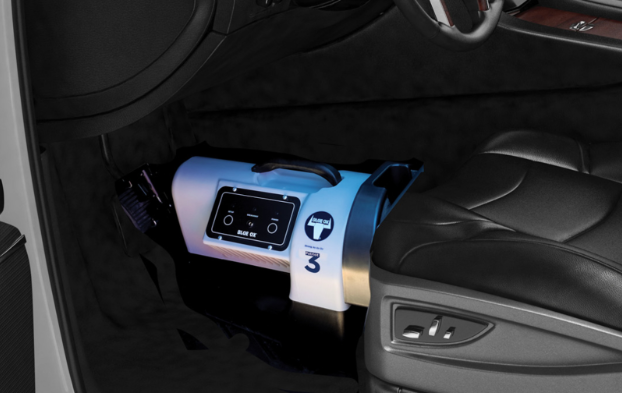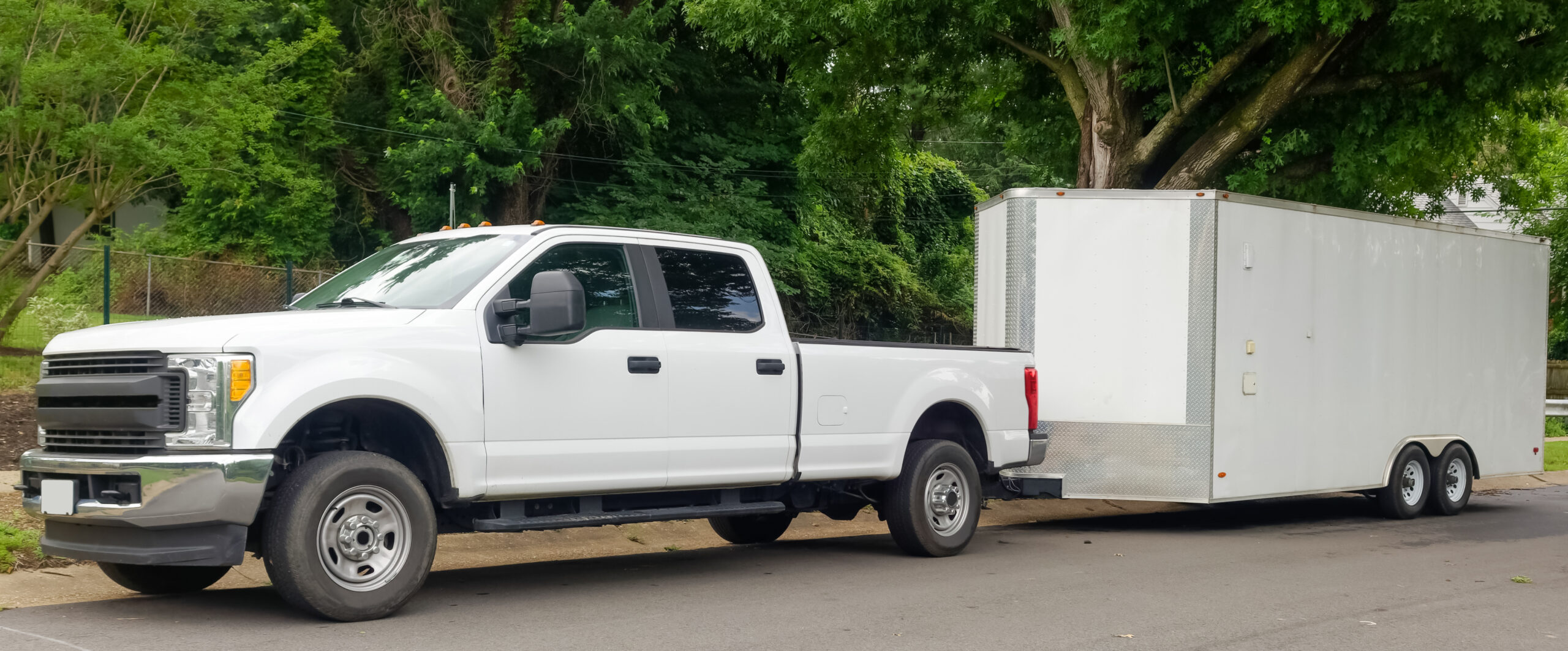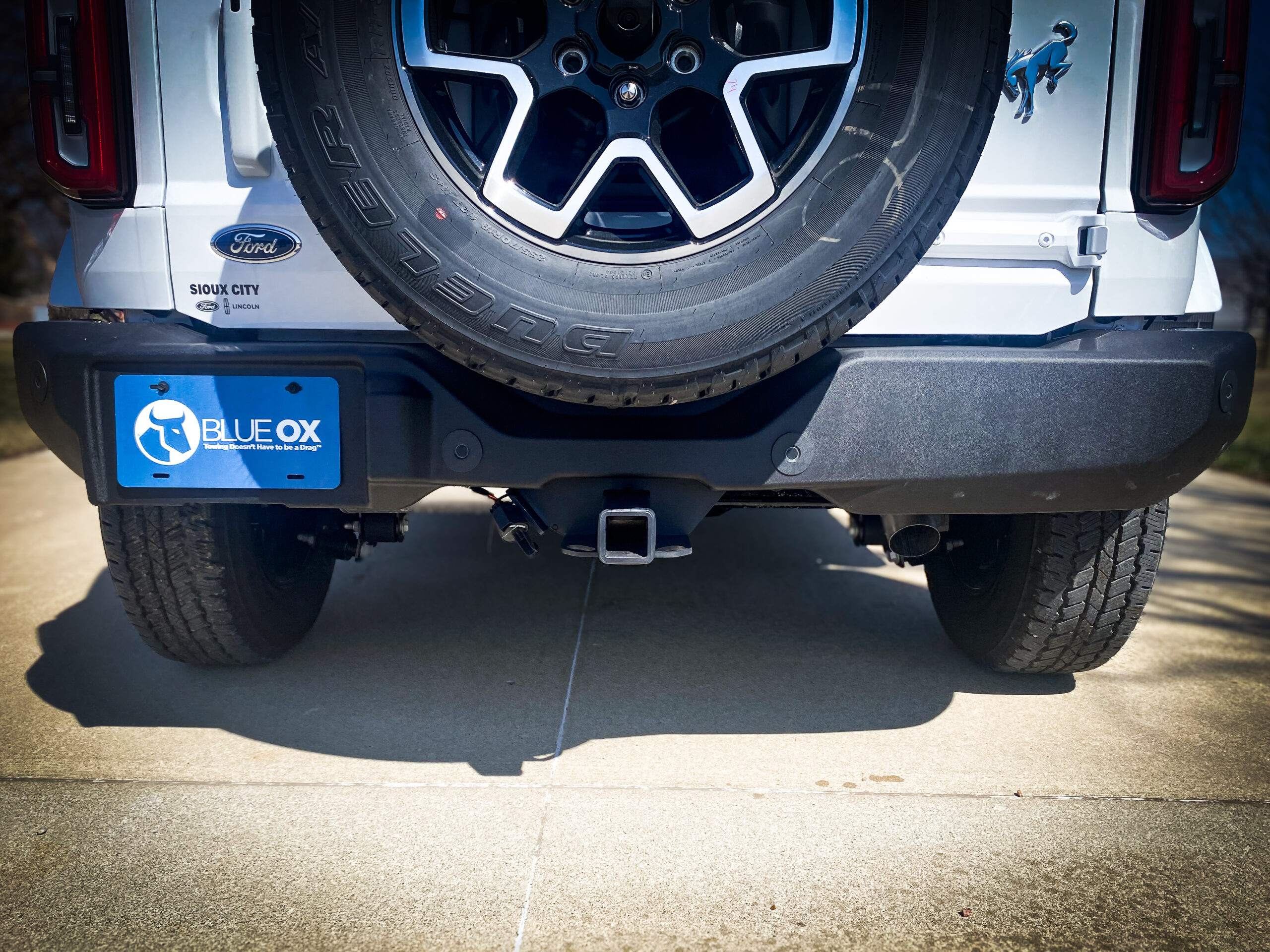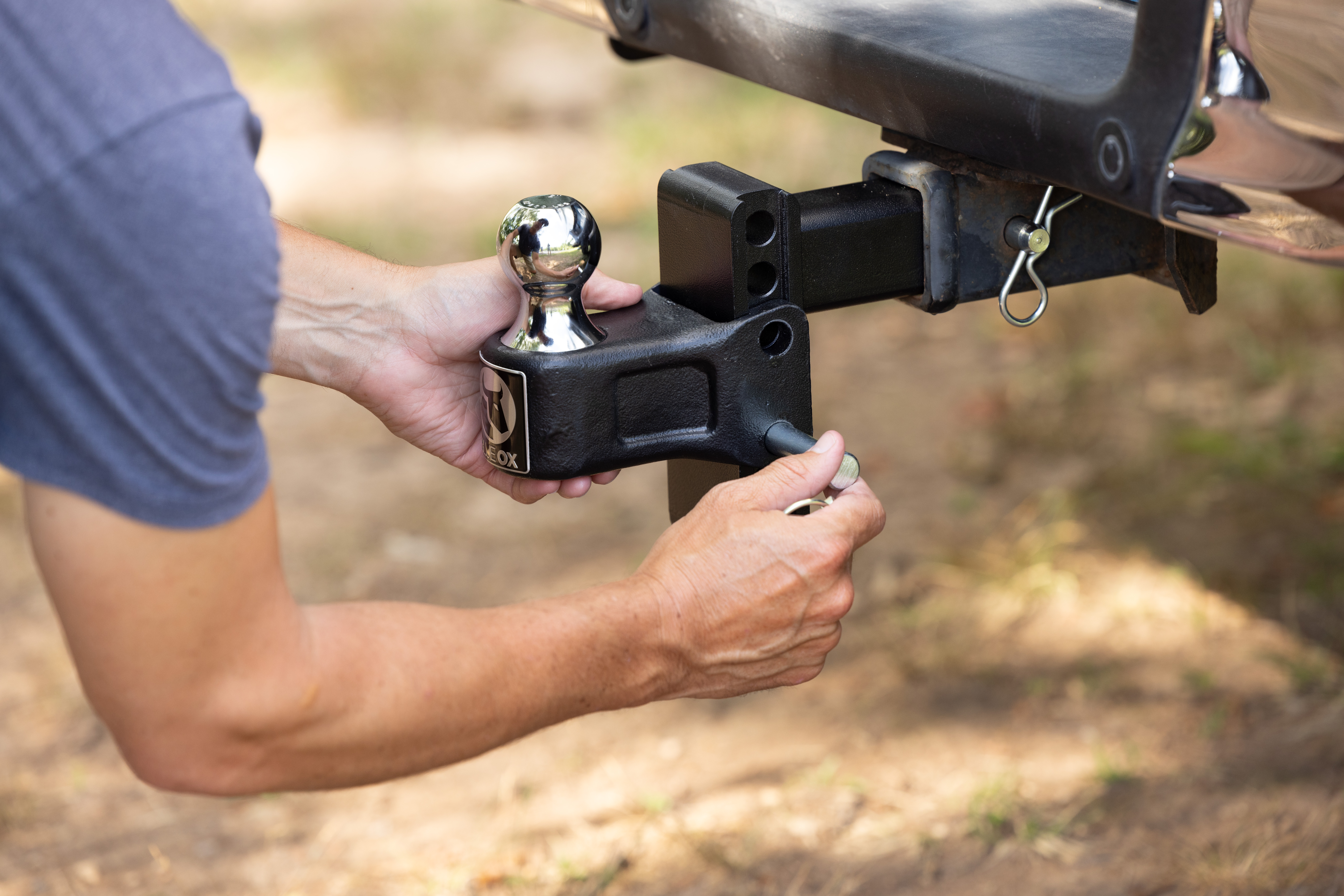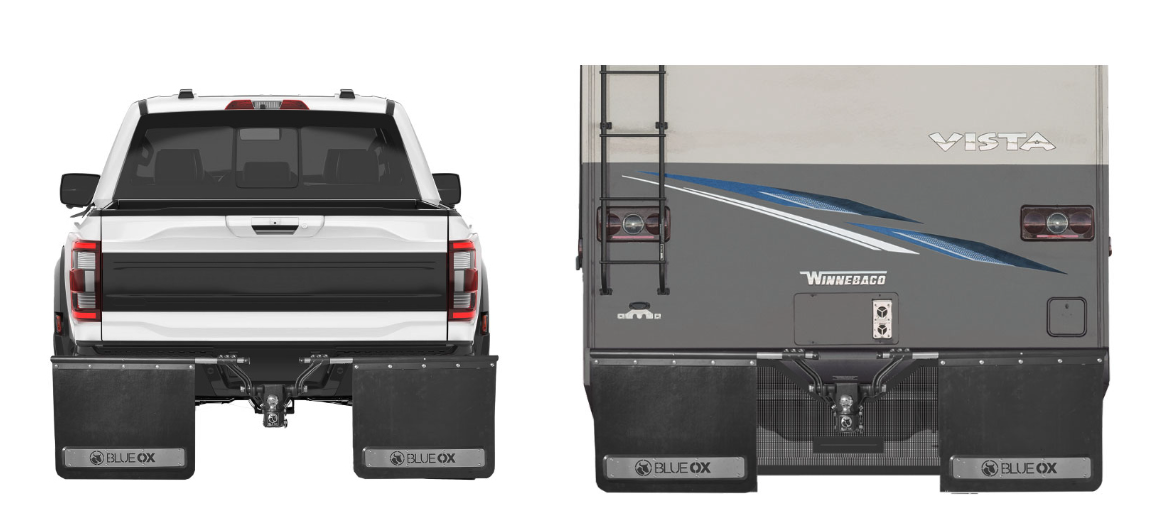If you’re new to trailer towing, you’ve likely heard that you need a flat tow brake system, aka dinghy towing brake system, to properly pull your flat towed vehicle. Obviously, braking is essential, but what is a flat tow brake system, and why do you need one? There are many different brands and types available, like the Patriot Brake from Blue Ox. It’s important to know what your options are and which is best for your setup when it comes to towing brakes.
Is Flat Towing Safe?
Flat towing is perfectly safe when you have the right equipment. It can actually be incredibly convenient when traveling in an RV. However, without the necessary equipment, like a tow brake, tow bar, baseplates, and wiring, you could cause damage to your dinghy, coach, or others on the road.
What is a Flat Tow Brake System?
Also known as a “dinghy towing brake,” a flat tow brake system is a device that applies the brakes of the dinghy based on driver input. The tow brake goes into action as soon as the tow vehicle’s brake pedal is pushed or the remote is used to engage the brakes.
All controllers feature an adjustable voltage output, which allows the amount of gain, or braking force, to be adjusted according to the type of dinghy and weather conditions. The manual override feature of tow brakes enable you to activate the dinghy brakes without engaging the brake pedal on the coach.
Why Is Flat Towing Brake Important?
Stop Sooner
As far as braking goes, you don’t want to put all of the burden on either the dinghy or the coach. Imagine if you apply your brakes at 60 mph on the highway. Despite your tow vehicle’s halt, the dinghy’s forward velocity increases your stopping distance and potentially puts you in danger of an accident. A trailer brake like the Patriot Brake will help both the coach and dinghy slow down sooner and safer.
It’s the Law
In the United States, there are different laws regarding tow brakes depending on what state you are in and what state you are traveling to. For example, in Texas, there is a 4,500-pound limit. However, when you cross state lines into New Mexico, there is a 3,000-pound limit before a trailer brake is needed. If you are crossing the border into Canada, they also have their own regulations for trailer towing. So, do your research into the laws where you live as well as where you will be traveling to be certain you aren’t breaking any laws.
What Are The Best Flat Towing Brake?
The Patriot Brake from Blue Ox is simple to install, easy to use, and convenient to store when not in use. It works by applying proportional pressure to your brakes in a smooth motion, so there is no damage to your brake or jolting when stopping. You can monitor brake function from the driver’s seat and apply the brakes with a wireless remote control with an extended RF range that communicates with the braking system. It has a built-in capacitor battery to maintain power to the brake at all times. The Patriot Brake is one of the top dinghy towing brake systems on the market.
How To Install the Patriot Brake
In The Towed Vehicle
- Open the driver-side door of the towed vehicle and push the driver seat back as far as possible.
- Place the Patriot 3® unit on the floor.
- Open the brake claw and secure it on the brake pedal.
- The Patriot 3® can be used without the feet. If needed, the feet can be attached and adjusted for proper height position for uneven floorboards.
- Plug in the power cord into a constant 12-volt power source. The indicator light on the cord will glow.
- Check to make sure the towed vehicle is not running.
Note: Any time the towed vehicle is started up, the brake needs to be reset.
- Press the power button. The actuator will briefly adjust itself. The indicator lights will blink in a repeating sequence.
Note: If the lights are solid blue and red, there is too much pressure on the brake pedal. Pull the brake unit back, away from the pedal until the lights switch to a blinking blue and green sequence.
- Adjust the push pad up or down for proper height position in relation to the seat.
- Slide the driver seat forward against the push pads. If the lights switch to solid blue and red, there is too much pressure on the back of the brake. Slide the seat back until lights resume normal sequence. You will be unable to continue set-up until lights flash blue and green.
Note: The seat should not put any pressure on the back of the brake unit.
- Push the “SETUP” button. The actuator arm will then cycle only once, then remain in the ready position. The power light will illuminate green if the brake is set up properly. Refer to remote for any errors encountered during setup.
In the Motor Coach
Find a sturdy, easy-to-reach location to mount the RF in-coach controller. The dashboard is the suggested mounting point, but anywhere that is secure and accessible to the driver will work. Using the Velcro provided, attach one side to the desired mounting point, and the other side to the controller.
You can also place the remote in the rubber stand provided and rest it on a flat section of the dashboard. Make sure both the dash and the stand are clean and dust free before use.
Note: The Patriot 3® Brake should be used with the RF controller. We recommend using the controller for the operational feedback, however, if necessary, the brake can be used without the RF controller present.
For the full set of installation instructions, click here.
How To Use the Patriot Brake
Tow brakes are easy to use, especially when you are using the Patriot Brake. Simply follow these operating instructions:
- Plug the 2-Way RF In-Coach Controller into an available 12 volt outlet.
- The large number on the display represents the “FORCE” setting of the Patriot 3® Brake. In order to adjust how aggressive the Patriot 3® will be during braking, you can adjust the “FORCE” setting. For more aggressive braking, raise the “FORCE” setting and for less braking, lower it.
- The “MAX FORCE” setting in the SETUP menu can be used to set the maximum amount of force the brake will ever apply. For smaller vehicles, or vehicles with more sensitive brakes, this number can be lowered. For large vehicles, or vehicles with unresponsive brakes, this number can be raised.
- On the bottom of the RF Controller there is a “MANUAL OVERRIDE” button. Pressing down on this button will cause the Patriot 3® to press down on the brake pedal.
Note: This acts like a trailer brake and is useful in wet weather to keep the towed vehicle in line.
- If the screen on the remote chances color to either yellow or red, an error has occurred. Check the display screen on the Patriot 3® remote to see what has happened. Errors with a yellow screen will prevent the brake from working properly, but do not require you to immediately pull over. Errors in red require you to immediately pull over and address them.
- Insure the Patriot 3® is plugged into a constant 12V power source.
- If a breakaway switch is installed and plugged in, the “BRK/AWAY READY” message will appear on the remote. Follow the instructions provided.
- Anytime the towed vehicle is started up, the Patriot 3® needs to be reset.
- Go through the set-up procedure again if the unit is shut off for any period of time.
Get a Dinghy Towing Brake System from Blue Ox
Visit the Blue Ox website to order your Patriot Brake today and browse other brake accessories including:

